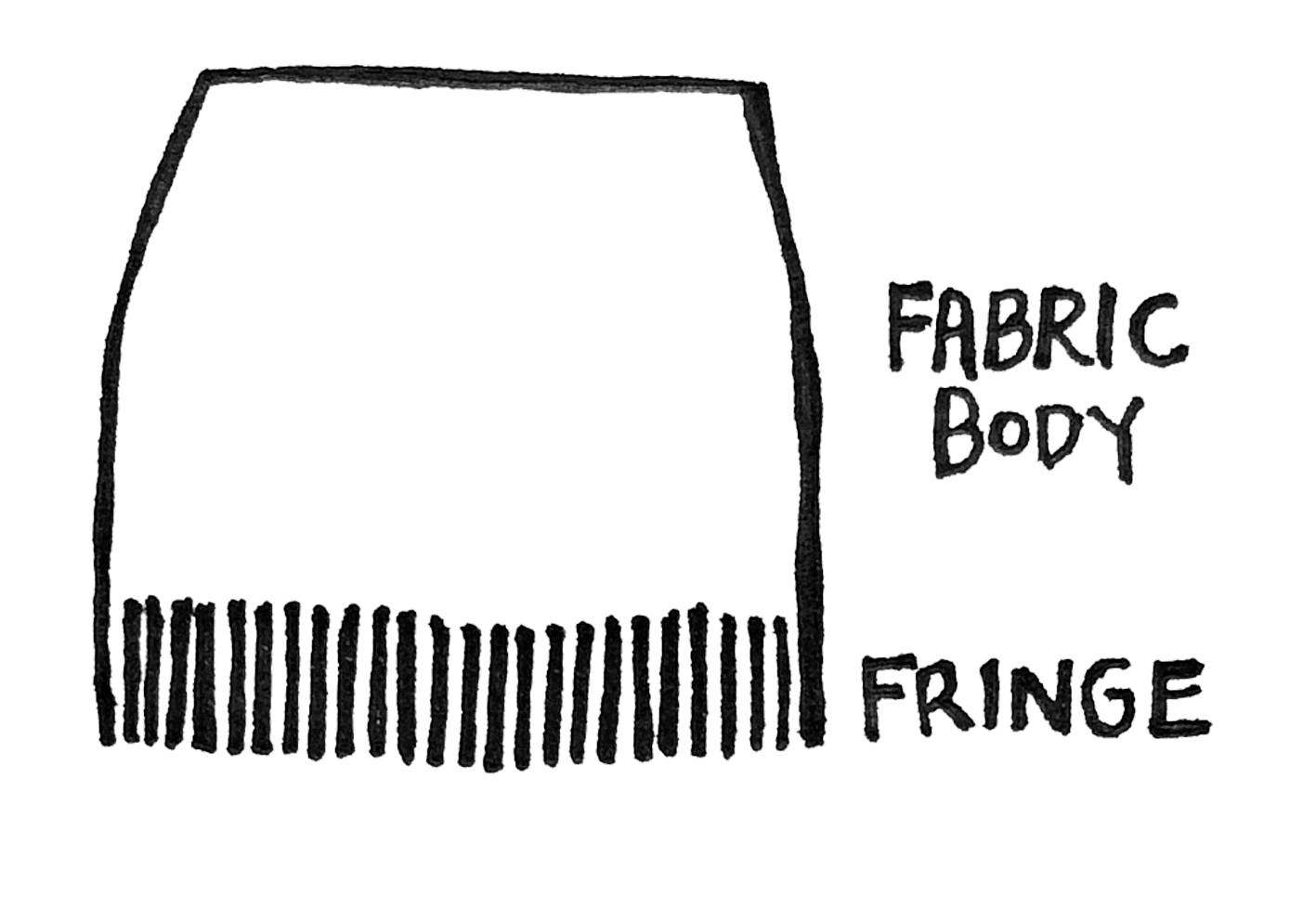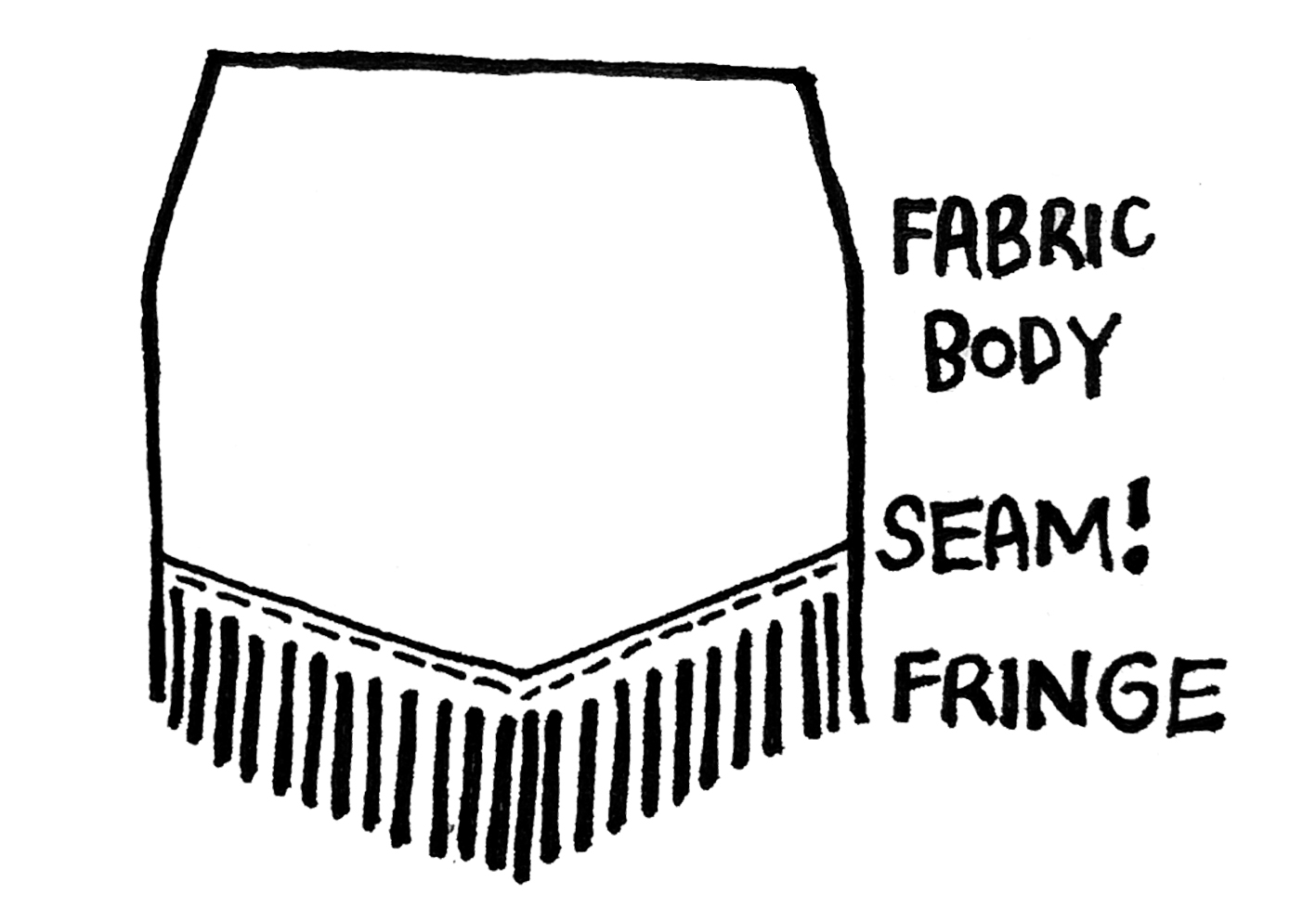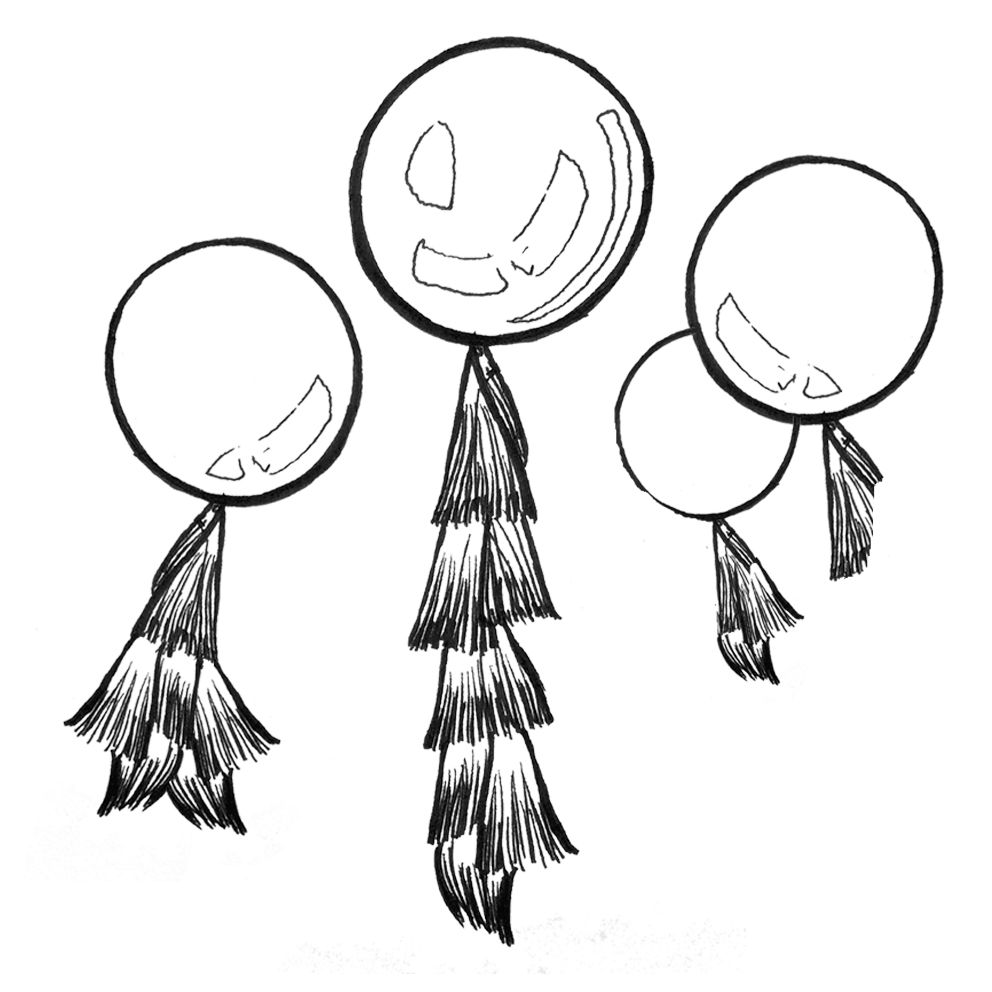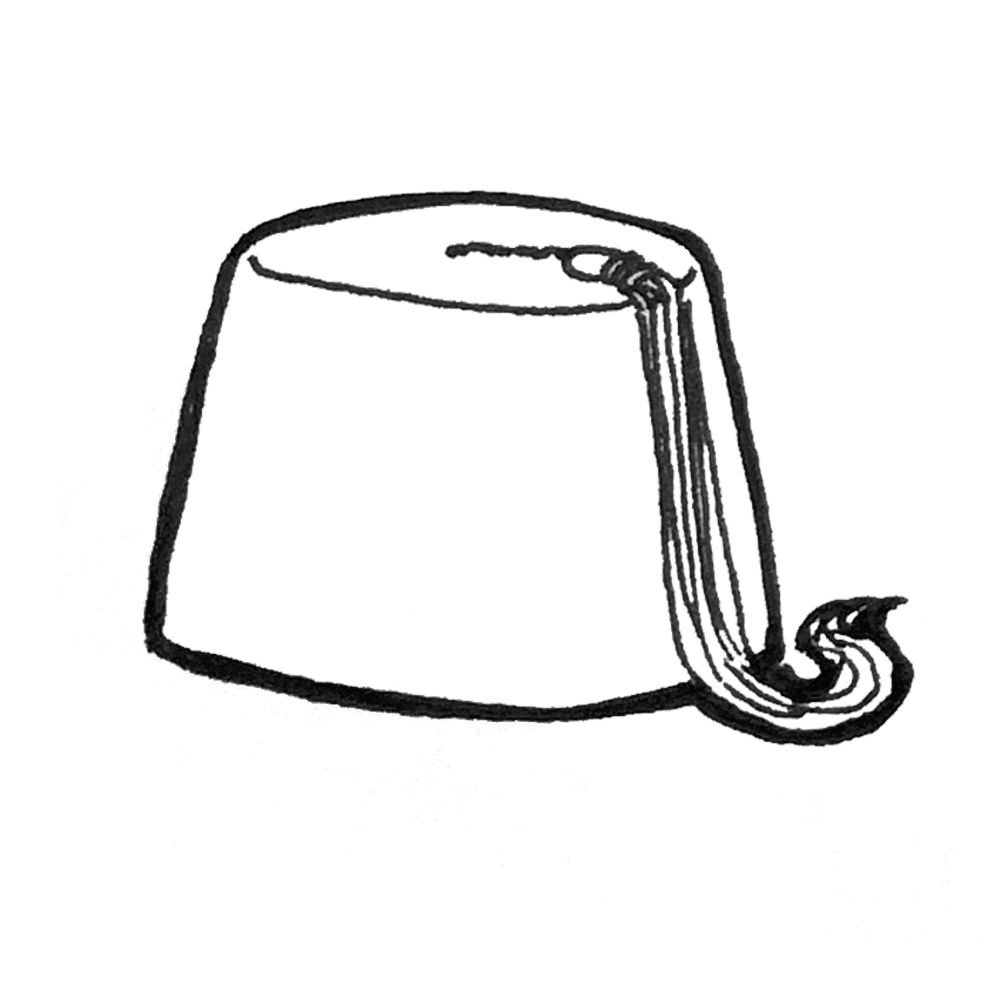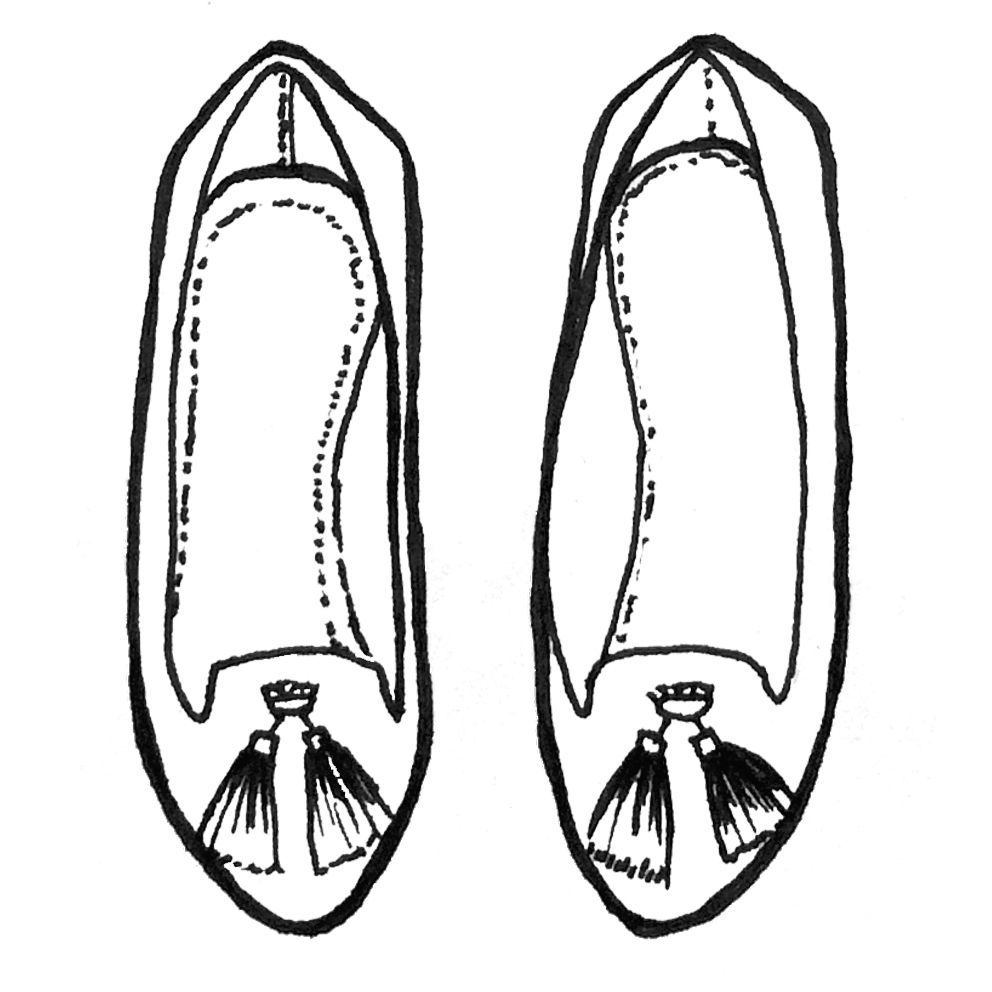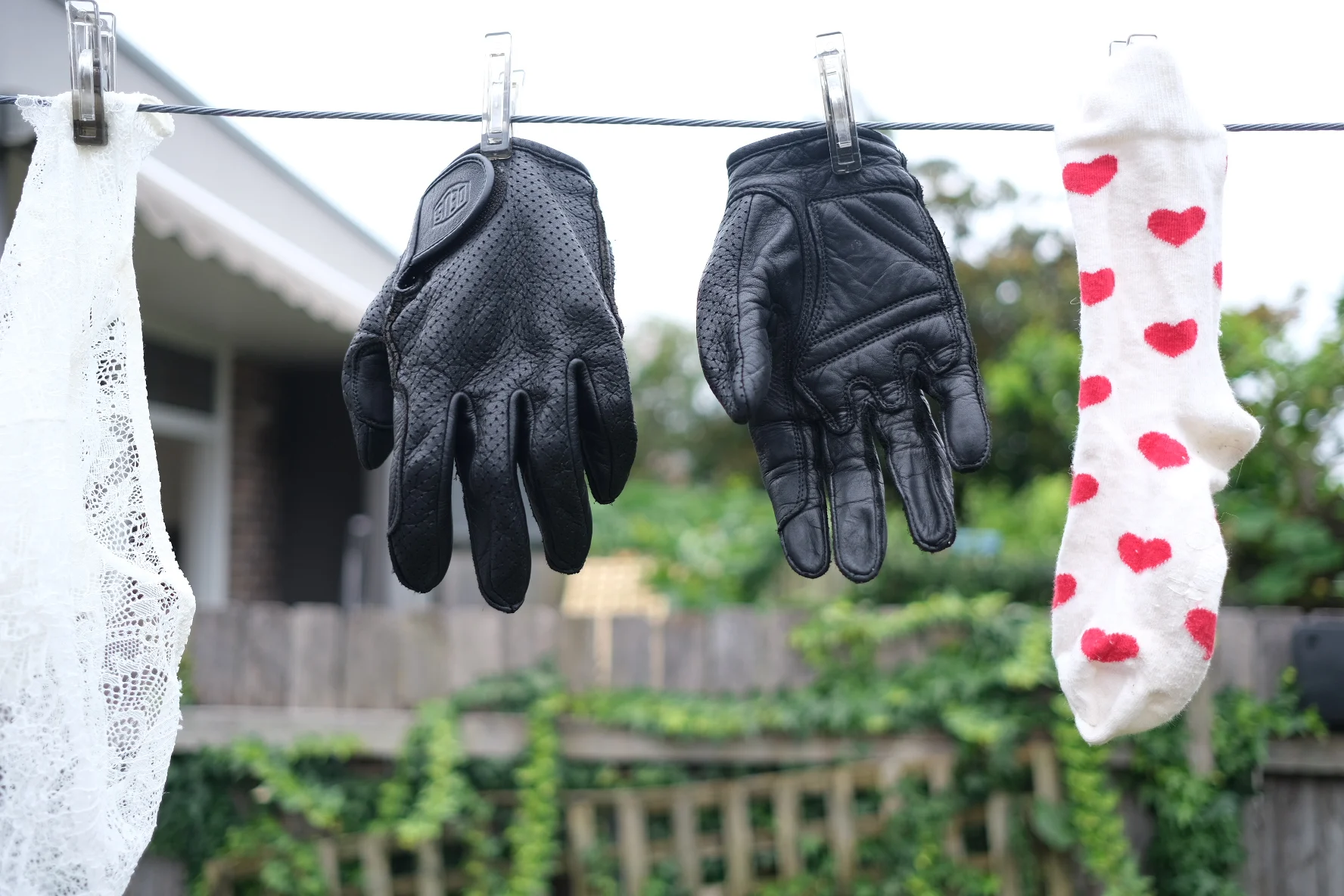Fringe Benefits

PHOTOS | KATE DISHER-QUILL
ILLUSTRATIONS | JO-ANN McEWAN
If I told you Jimi Hendrix, Cher, and Dennis Hopper all gave something the seal of approval, would you wear it too? What the fringe are we talking about, I hear you ask?
Native Americans originally wore buckskins trimmed with fringe for functional, rain repelling purposes, wicking rain away from the body like water off a duck’s back. It wasted less material with the fringe integrated into the fabric (to prevent it from unraveling without needing a hem). Somehow this caught on with the late 1940s to early '50s Hells Angels (wasting fabric and wet weather gear must have been causes close to their hearts). L.A. band Weezer were notoriously fringe-free.
Fringe can also be made separately and sewn on to embellish anything from curtains (Beauty and the Beast library style), balloon installations (crafty mum party style), and fezes (trained monkey style), to the ubiquitous smoking slipper (fake gentlemen’s club style), or even a surrey with the fringe on top.
Not to be confused with the B-52’s EP Mesopotamia produced by David Byrne (which was released slightly later in 1982), Mesopotamia (modern day Iraq/Kuwait) spawned the practice of fringing around 3000 BC. Made from wool, linen or cotton (or silk for the rich folk), fringes were so individually unique they could be used as a signature on important contracts, impressed into clay.
Following its long history, even the bible refers to it: “you shall have the tassel, that you may look upon it… that you may not follow the harlotry to which your own heart and your own eyes are inclined” Numbers 15:38-40. Ironic then that tassels are the nipple sticker of choice for strippers everywhere.
Source: giphy.com
Interestingly, fringing in the 1920s was incredibly heavy and expensive densely woven silk. A dress covered with the stuff could have sunk the Titanic (without the iceberg). It was originally used sparingly, to assist the drape of a garment; the weight directing the grain of fabric in a particular direction. The rise of mass-produced, significantly lighter synthetic fringe in the post war 1950s (used in then modern films which harked back to the '20s) lead to the emergence of what we now know as Charleston dresses, completely covered in fringe. Drawing onlooking eyes to the skin revealed in a shimmy or a shake (not that flappers and strippers are the same, though they could be distant cousins), the 1950s versions featured nipped in waistlines, thinner straps, and higher hemlines than the earlier, more boyish silhouettes of the “roaring '20s” they were referencing.
Photo by Pete Cagnacci
Those with the status of gentleman-commoner at the University of Oxford or fellow-commoner at Cambridge University (paying something like double the usual tuition fees) donned a gold tassel in place of the usual black on their graduation caps to distinguish themselves from less wealthy students. Colour doesn't tend to affect aerodynamics though, so apart from the increased social prestige and more luxurious accommodation afforded to those in gold, the caps were otherwise the same.
In the 1970s fringing was a brief and ill-advised fad, though remains a staple of ‘Western wear’. Yves Saint Laurent created two fringe-filled collections in 1967, Ralph Lauren and Armani explored it in the '80s, Dolce & Gabbana, John Paul Gaultier and John Galliano had collections featuring it in the '90s, with Prada following suit in 2007.
I don’t know about you guys, but I prefer Elvis in his military days to his white fringed jumpsuit period; more polished-man-in-uniform than Birdperson-from-Rick-and-Morty. Nonetheless, whether you aspire to the style prowess of Tina Turner, or want clothing with the built-in utility of an Aussie cork hat*, fringing has a vast history and is apparently harder to kill than a cockroach in a nuclear blast.
Appease the jazz age vixen/hippy/easy rider/tuft-hunter/supermodel/rockstar you are inside and get into it. It could be your new signature look.
*they keep flies off
Photo courtesy of Zaya
Jo is a buxom redhead looking for adventure. She loves her motor children equally, and if you ask really nicely, she might let you take them for a spin. Easily distractible, but also easily obsessed, she is our Editor-in-Chief, resident proof-reader, and zany ideas lady. Caffeine is her fuel of choice.

